Forks in the Road
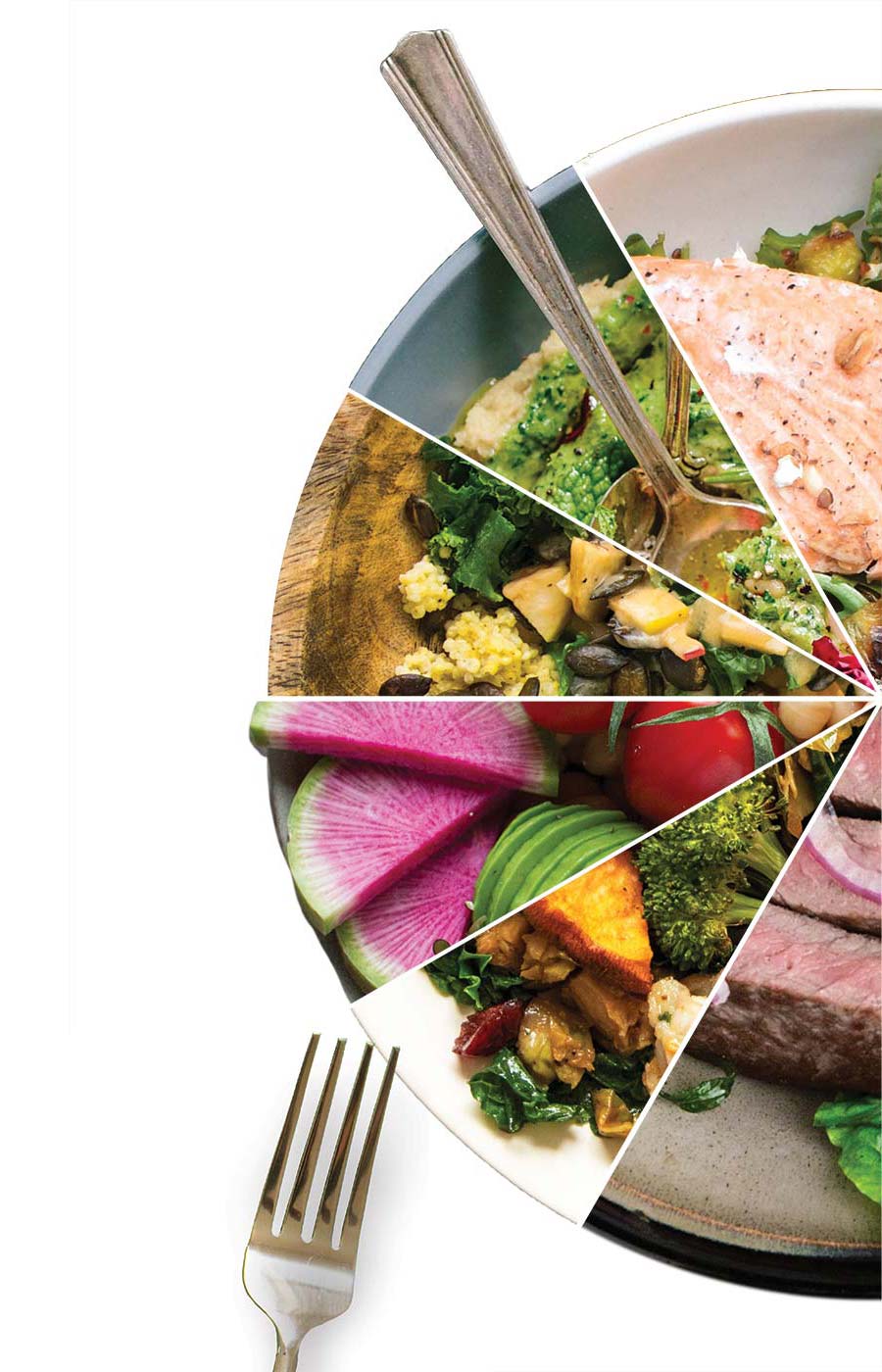 Any approach to eating worth its salt tends to encourage adding more whole foods, cutting back on refined foods and seeking out quality ingredients. Luckily for all of us, Kentucky and Southern Indiana are home to a plethora of health-minded local restaurants, friendly farmers’ markets and fully stocked grocery stores.
Any approach to eating worth its salt tends to encourage adding more whole foods, cutting back on refined foods and seeking out quality ingredients. Luckily for all of us, Kentucky and Southern Indiana are home to a plethora of health-minded local restaurants, friendly farmers’ markets and fully stocked grocery stores.
Edible Kentucky & Southern Indiana spoke with seven Kentucky and Southern Indiana residents who, though their ways of eating are quite different from each other, have changed their diets in ways that are working well for them. What they’ve found is more energy, improved health and a better sense of which foods make them feel best. By tuning in to how they choose to fuel their bodies, these local residents have truly transformed their lives.
Note: We encourage you to speak with a health professional before making any dietary changes so they can ensure you’re not missing out on any important nutrients and don’t have any health issues that could be of concern.
KETO
Megan Donahue and Tyler Donahue

Megan and Tyler Donahue’s reasons for diving into the keto diet extend beyond their own health concerns. “We really wanted to give it a try because we have family members who are overweight and have arthritis and knee issues,” Megan says. “We kept hearing about the health benefits of reducing inflammation in the body and moving toward a more natural way of eating. We had watched ‘The Magic Pill’ on Netflix and did a lot of research on sugar and how it can be harmful to your health.
Tyler adds, “We knew if it went well for us, we could help our family members figure it out and give it a try, too.”
Their attempt to lead by example fared so well that they are still at it a year later. Luckily, they had each other to get them through the initial adjustment period. For Megan, that included almost two full weeks of feeling tired, run down and lightheaded as her body adjusted.
“All of a sudden, on day 15, I woke up feeling really good. I wasn’t starving, I wasn’t crabby, and my digestion felt great.”
It is true that making the switch to a high-fat, low-carb keto diet can be difficult. When your body is accustomed to using sugar (or carbs) for fuel, it takes time to settle into a state of burning fat for fuel. Though the ketogenic diet has been shown to help reduce blood sugar and insulin levels, boost weight loss and possibly even support brain and heart health, it takes work to get into ketosis and stay there.
Megan and Tyler tracked their food intake closely in the beginning to ensure they were staying under their daily carb limit. “Our goal is to stay under 20 net grams of carbs (meaning total carbohydrate grams minus total grams of fiber) per day,” Tyler tells me. “We found an app called Cronometer that has been really helpful.”
When they started the diet last February, Megan knew she had an upcoming health assessment at work. Her numbers had always been good, but she really wanted to see how her dietary changes would affect the results.
“My triglycerides and blood sugar both improved. I also no longer have the blood sugar ups and downs that I used to experience throughout the day.”
Better test results are nice, but they weren’t Tyler’s first reason for living the keto lifestyle. “I played football for a long time and had plenty of injuries. I have arthritis in both knees and have experienced head injuries. There’s a lot of research out there that shows keto can be beneficial for brain health and I really wanted to work on reducing inflammation for my arthritis,” he says.
They’ve even figured out that they can save money by cooking simple meals like carnitas with peppers, onions and guacamole, or curried meatballs. By keeping their meals simple, they can put their food budget toward higher- quality items like organic meat and grass-fed butter.
“It’s relatively easy for us now and we know how good we feel when we’re sticking to it,” Megan says. Their health improvements, boundless energy and optimism that it will support their health well into the future are all the proof Tyler and Megan need to continue down the keto path.
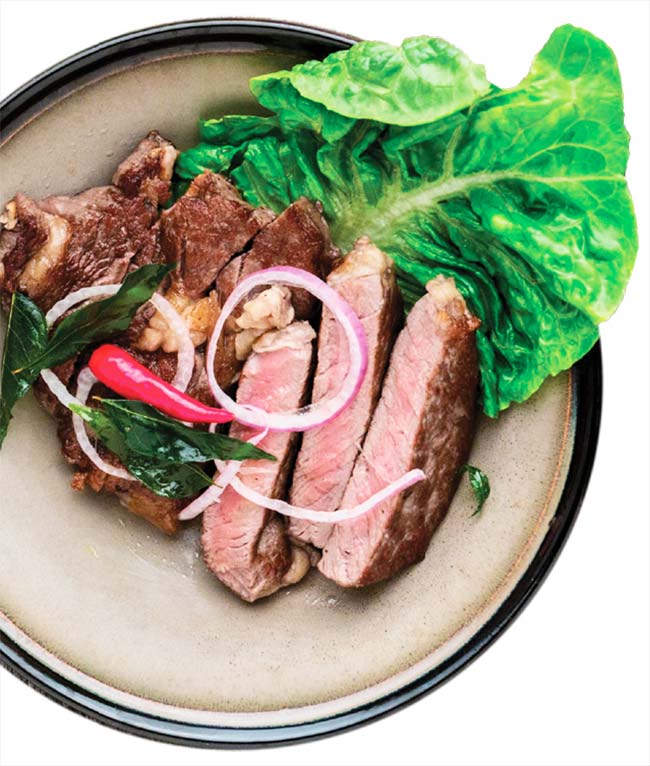 WHERE THEY SHOP
WHERE THEY SHOP
- Kroger
- ALDI
- Trader Joe’s
FAVORITE SNACKS
- KetoConnect Chocolate Chip Fat Bombs
- Epic Bars
- Quest Bars
- Trader Joe’s Cheese Crisps
- Pork rinds
- Seaweed strips
- Nuts
FAVORITE RESTAURANTS
- Chipotle
- Bully Barbecue
- Steak and Bourbon
VEGAN
Kristina Addington
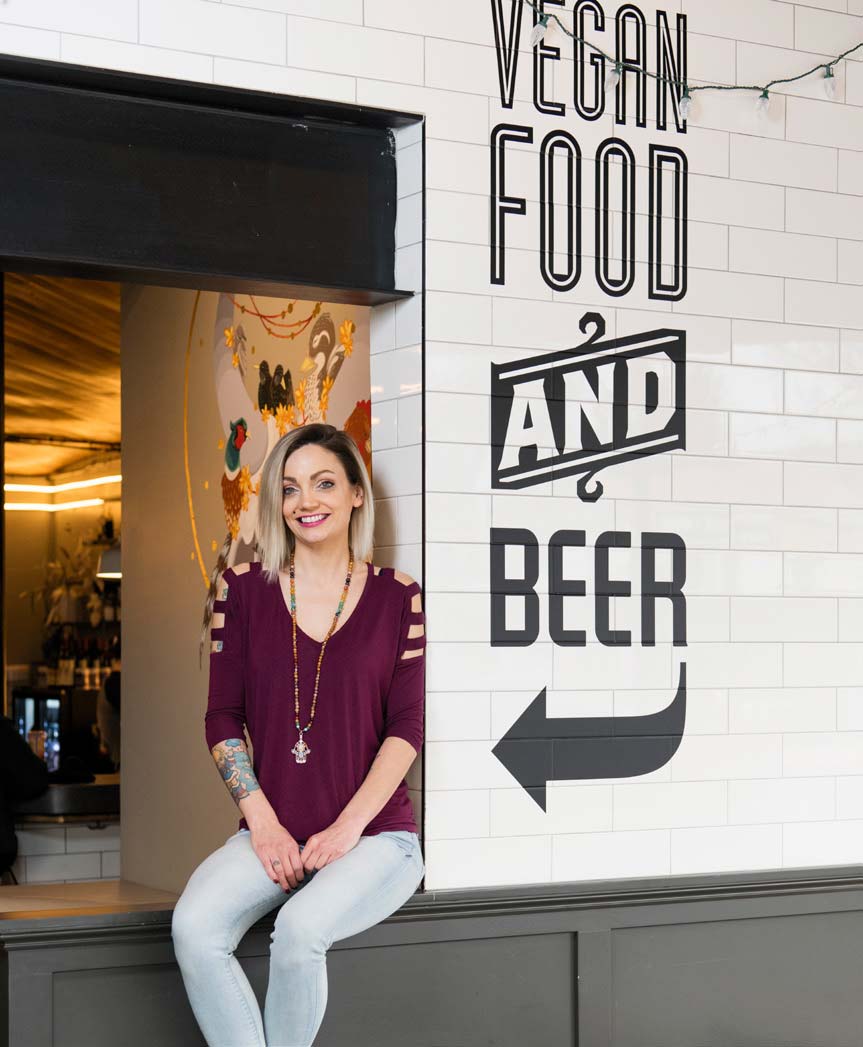
It’s hard to believe there was a time when anyone would disparage Kristina Addington’s vegan cooking. As the owner of V-Grits, a vegan restaurant in Louisville and winner of Food Network’s “Cutthroat Kitchen,” she’s pretty much the expert when it comes to whipping up Southern-style food with a vegan twist. She’s quick to laugh about it, but she still recalls her family playfully joking with other patrons at her restaurant’s launch party about how bad some of the first vegan meals she prepared for them were.
Kristina didn’t grow up vegan; in fact, it was quite the opposite. “My family is from Southeastern Kentucky and that’s where I spent all my summers. Everything was centered on food. There was bacon grease in the green beans and my mom even topped her biscuits with bacon grease before putting them in the oven so they would get nice and crispy.”
What got her from where she was back then to where she is today was a random internet search about 14 years ago. She happened upon some information about factory farming and kept digging and researching, wanting to understand where our food really comes from.
Once she found the answers, she almost immediately went vegan cold turkey. She admits it was hard at first. “There weren’t as many options back then as there are today. At the grocery store, you could pretty much only find soy milk and Boca Burgers.”
Kristina had always been into cooking but this was new territory, which meant getting in the kitchen and learning a new way. As you may have guessed, she eventually got the hang of vegan cooking and chose to focus on the Southern- style comfort foods she grew up on.
After working as campaign coordinator and corporate liaison with People for the Ethical Treatment of Animals (PETA), she transitioned to the professional cooking realm with vegan cooking classes, a vegan gluten-free baked goods company and a chance to run the kitchen of a vegan café in Shelby County. These experiences gave her the time she needed to hone her skills and apply to be on “Cutthroat Kitchen” in 2014.
“I wanted to show people that I could cook better with vegan ingredients than they could with meat and dairy,” she says. It appears to have worked, because she won and used the prize money to open the first iteration of V-Grits: a vegan food truck. After a few years, she had built enough of a following that she decided to open a restaurant and, in October 2018, V-Grits was born.
“My favorite thing about the food truck was connecting with people and making relationships. I could offer cooking suggestions and, now with the restaurant, I get to do that with hundreds of people every week. It’s very fulfilling to me being able to help people who are interested in making this change.”
Aside from the advantages to animal welfare, however, many people see benefits like weight loss, improved blood sugar and blood pressure and reduced risk of heart disease, when they transition to eating a plant-based, whole-foods diet.
It’s obvious from Kristina’s continued success that many locals are excited to learn more about going vegan—especially if that education includes pizza fries, a chicken fried steak sandwich and the other tasty vegan delights available at V-Grits.
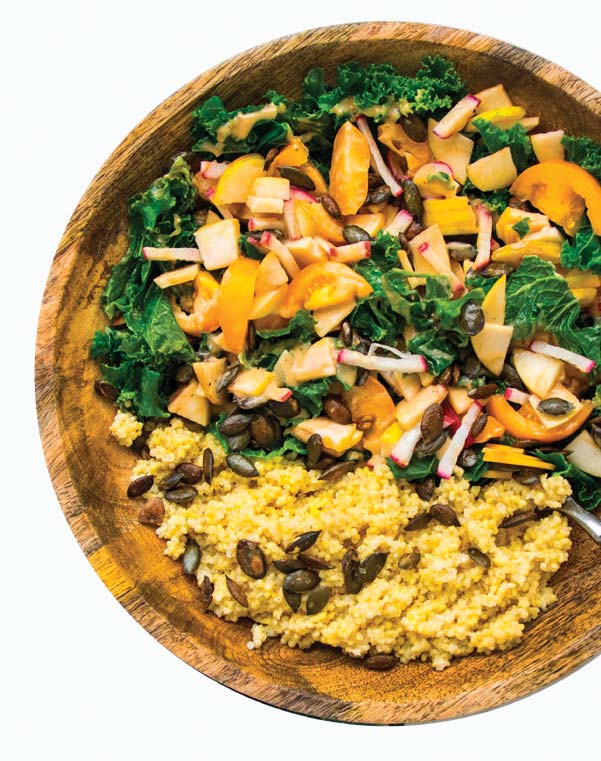 WHERE SHE SHOPS
WHERE SHE SHOPS
- Rainbow Blossom
FAVORITE SNACKS
- Smoothies
- Crunchy chickpeas
- Whole-grain toast and peanut butter
FAVORITE RESTAURANTS
- Flora
- Rawnaissance
- Dragon King’s Daughter
GLUTEN-FREE
Sarah Teeple
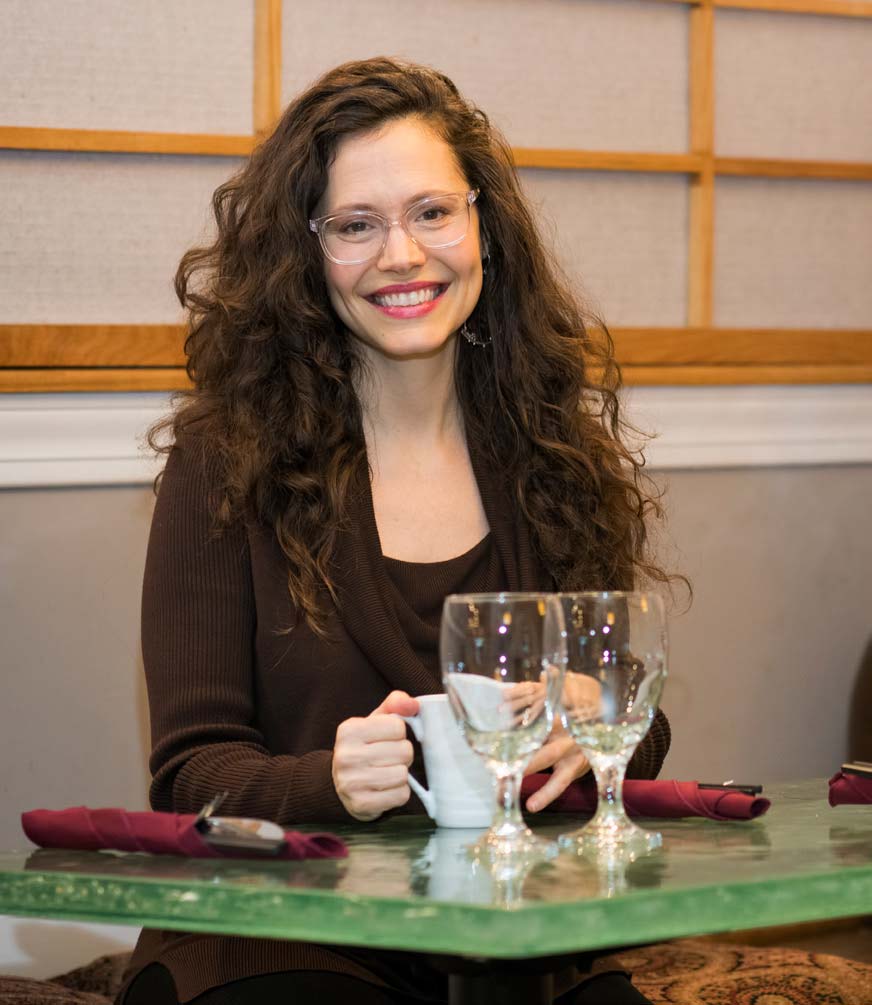
Sarah Teeple has always had an interest in the connection between food and health, but after suffering from skin and breathing issues due to a chemical exposure 12 years ago, Sarah used what she knew about that connection to help heal her symptoms.
“I decided to dig a lot deeper when these symptoms developed that wouldn’t go away,” she says. “That was when information was first coming out about the concept of gut health and the microbiome. I learned that at the root of almost any symptom or condition are inflammation and gut disturbances.” At the top of that list of inflammatory foods are refined sugar, gluten and dairy. Sarah went gluten-free right away and slowly worked toward eliminating dairy, as well. She started noticing improvements almost immediately. “Within two weeks I felt more energetic and had lost some water weight,” Sarah says. Within two months, her skin issues improved. Half a year after going gluten-free, Sarah’s seasonal allergies disappeared and her breathing issues were gone. “You start to notice benefits in areas of your life that you wouldn’t have imagined. I started shopping at more farmers’ markets, going to more yoga classes and taking more walks,” Sarah adds.
It took about a year of trial and error for Sarah to hit her stride with gluten-free living, but she eventually realized it wasn’t as hard as it first seemed. “I started out buying a lot of gluten- and dairy-free products,” Sarah remembers, “but it was so much easier for me to purchase a wide variety of whole foods like fruits, vegetables, grains and proteins that are naturally gluten- and dairy-free. It was so much simpler and more affordable for me.”
Sarah was so thrilled with her own healing journey that she wanted to pass on her newfound health knowledge to others. “When I became more interested in health and healing, I went back to school for a holistic health coaching certification in 2012.” She shifted her focus from her previous career in social work to one-on-one holistic health coaching.
A forever student, Sarah bolstered her nutrition credentials with a yoga teacher training certification in 2016, which is where she first learned about Ayurvedic medicine. “Ayurveda is based on the delicate balance between mind, body and spirit and teaches you which foods are best for your unique constitution,” Sarah says. While she was feeling better and eating an incredibly healthy diet, Ayurveda showed her that there is no one diet that works for everybody. “It really simplified and demystified all of these different nutritional approaches.”
Through Teeple Holistic (sarahteeple.com), her Ayurvedic and functional medicine practice at the Common Ground Wellness Center, Sarah is able to help others make sense of their diet and find what works best for them. While she is currently accepting new clients, Sarah is most excited to be expanding her reach this year with the release of her first book, Beautifully Balanced (out later this year). “This book will serve as a woman’s guide to eating and living according to her Ayurvedic constitution,” Sarah says. Through her own education and healing, gluten-free now fuels not only Sarah’s own life, but her career, as well.
WHER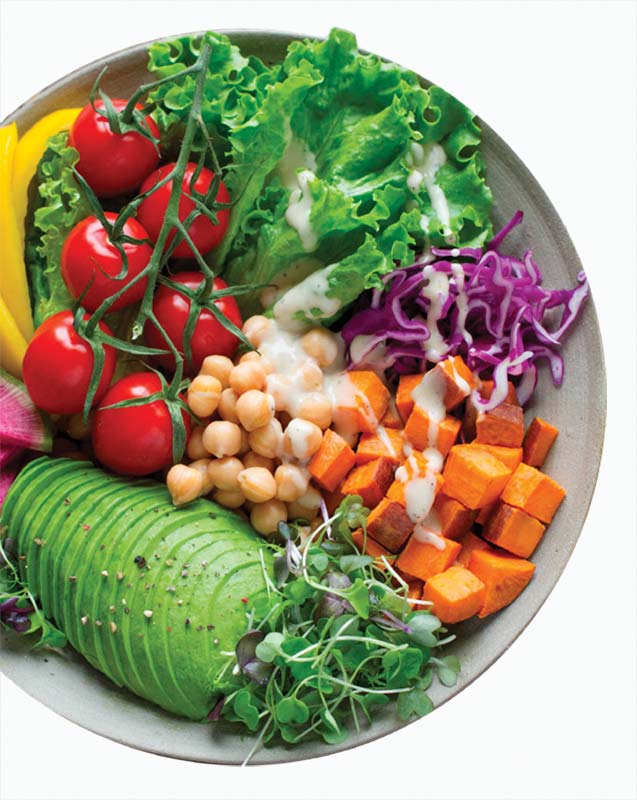 E SHE SHOPS
E SHE SHOPS
- Rainbow Blossom
- Farmers’ markets
FAVORITE SNACKS
- Organic oranges or pink grapefruit
- Costco Coconut Clusters
- Herbal tea
- Organic roasted cashews
- GT’s Kombucha
FAVORITE RESTAURANTS
- Ramsi’s
- Roots
- Heart and Soy
- Dak Shin
MEDITERRANEAN
Joe Phillips

Spending most of his adult life in the restaurant industry, Joe Phillips, wasn’t always as discriminating with his diet choices as he is today. “I’ve been in the restaurant industry for three decades,” he says, “and you have a tendency to eat a lot of fried foods and saturated fats—the salty, sweet and fat foods that hit all the pleasure receptors.”
As so often happens, however, this way of eating took a toll. “The older I got, the more I would crave fresh foods,” Joe remembers. Then, in 2019, accelerated GERD (chronic acid reflux) and intestinal issues caused Joe to overhaul his diet completely. Joe cut back on the fried foods and opted for a Mediterranean style of eating.
Unlike a lot of diets, the Mediterranean diet doesn’t have hard and fast rules on what to eat and what not to eat. It relies heavily on fruits, vegetables, seafood, healthy fats like olive oil and avocados, and whole grains to make up the bulk of your diet, with the occasional red meat, dark chocolate and a glass of red wine to round things out.
“Intuitively, I felt really good when I started following a Mediterranean diet,” Joe says. “My energy levels were more balanced and it just made sense to eat more simple, clean foods.”
It didn’t hurt that, although he didn’t grow up with a passion for cooking, Joe knows his way around a kitchen. “When I was 27 or 28, I knew I wanted to own a restaurant. I decided to commit to it and get tons of experience.” He’s since risen through the ranks of local gems like Silver Dollar, Butchertown Social, Copper and Kings and Bank Street Brew House, honing his cooking skills along the way.
A typical meal for Joe these days looks like hummus, pickled vegetables and a big Greek salad, which just happened to have a small influence on the menu at Joe’s newest venture, Pints and Union, a European-style public house in New Albany. They do have a burger and other familiar pub fare, but Joe was “very intentional that we wanted to be the bar with the best food.” Among the healthier menu items, you’ll find a farmer’s plate with pickled vegetables and local Blue Dog Bakery bread. “We also have a great hummus,” Joe says.
With food playing such a dominant role in Joe’s life, he is a staunch advocate for high-quality food grown close to home. “You have to prioritize your health and your diet. It’s a huge responsibility to support the local food economy and know where your food is coming from. It’s important to feel connected to the food you cook and eat.”
That may seem like a lot to ask from a meal, but Joe believes that food should be a positive force in our lives. “When you give people too many rules, it makes them miserable and sets them up to fail,” Joe says.
“The Mediterranean diet is more about the overall way you live. Once you know how to cook, how to shop and what makes you feel good, it’s easy to go out and enjoy yourself from time to time and still live a healthy lifestyle.”
Joe’s come a long way from the days when his refrigerator held only cured meat, cheese and Pellegrino. Today, he enjoys the fresh, whole foods of the Mediterranean diet and hopefully his love will continue to influence his menu so we can enjoy it, too.
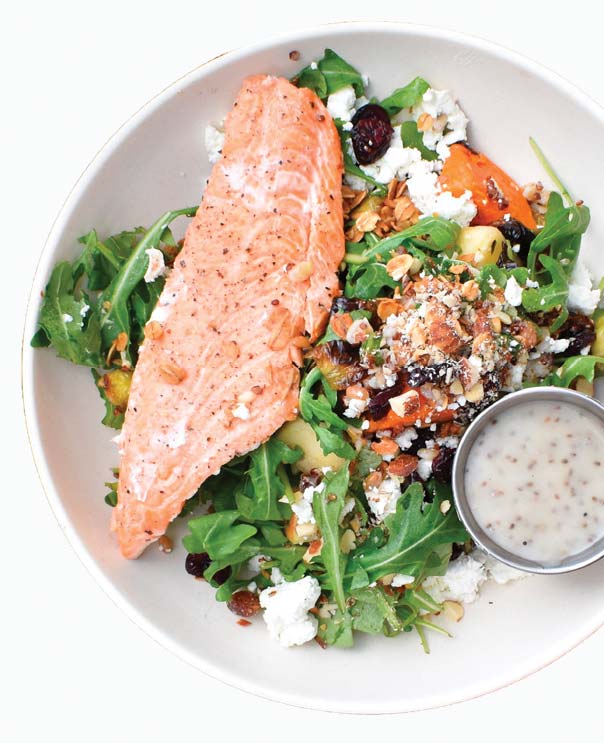 WHERE HE SHOPS
WHERE HE SHOPS
- Rainbow Blossom
- Douglass Loop Farmers’ Market
- Kroger
- Trader Joe’s
- Whole Foods (for fresh seafood)
FAVORITE SNACKS
- Hummus with vegetables
- Mushrooms with aged balsamic
- Carrots with oil and vinegar
FAVORITE RESTAURANTS
- Safier
- La Lupita
- Vietnam Kitchen
- Lee’s Korean
PALEO
Mallory Froman

As a former collegiate rower for the University of Louisville, CrossFit athlete and nutrition coach, Mallory Froman has always had a passion for health and nutrition. When she first heard about the Paleo diet, back when Paleo was gaining popularity in the CrossFit community, her first reaction was to laugh.
“I thought it sounded completely absurd,” she remembers. “There was no way I could give up bread and cheese and all the good foods in the world.”
It was having her first son that inspired her to finally give it a try. “When my oldest son started eating solids, I was eating something I didn’t want him to have. He kept reaching for it and it was like a light bulb went on—why was I eating something that I didn’t want to feed my child?”
She decided then and there to make a change. Instead of the low-fat, high-carb food pyramid rules she was taught to follow as a collegiate athlete, she stocked up on the healthy, whole foods that our ancestors might have eaten: fruits, vegetables, nuts, seeds, meat, seafood and natural sweeteners like honey.
Like many who follow the Paleo diet, Mallory experienced increased energy, fewer cravings and even noticed improvements in body composition despite having more food on her plate than ever before. According to the Mayo Clinic, the theory behind the Paleo diet is that the human body is genetically mis-mated to the modern diet and that we weren’t designed to digest foods that can only be made in factories. Removing these foods may improve digestion, energy, sleep, cholesterol, blood sugar levels and blood pressure numbers, to name a few benefits.
While Mallory did stick closely to the rules in the beginning, she is quick to note that you don’t have to follow the rules to the letter to enjoy the benefits of the Paleo diet.
“It was important for me to be strict for a good while, but over time I’ve slowly added some things back in that I know I feel really good with,” she says. For Mallory, that means more carbs (like white rice and oats) to support her CrossFit workouts and nursing her third child, a sixmonth- old baby boy. “It’s more about the big picture with Paleo,” Mallory says. “We try to stay away from too much sugar and a lot of convenience foods and focus on whole, unrefined foods.”
Mallory’s love for Paleo is now even influencing her professional life. She has held a nutrition coaching certification since 2017 and just this year began leading gluten-free, dairy-free freezer meal classes through her website, Strong Roots Kitchen (StrongRootsKitchen.com). “When I was working with clients one-on-one or even in a group setting, the piece that was missing was being able to get into their kitchen and show them how to cook,” Mallory says. Now, she gets to join people (most classes are groups of six or more) in their home and help them prepare 10 healthy meals that can go straight from their freezer to the slow cooker.
Thanks to the continued health benefits and now the opportunity to share her enthusiasm for Paleo with the community, Mallory loves Paleo more than ever and is certainly already cooking up her next big idea to help others do the same.
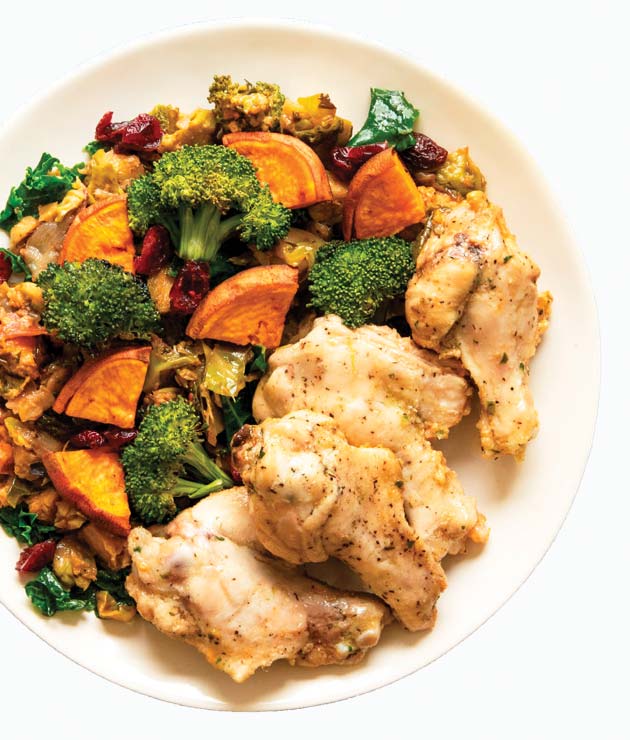 WHERE SHE SHOPS
WHERE SHE SHOPS
- Walmart in Crestwood
- ALDI
- Trader Joe’s
- Barr Farms CSA
FAVORITE SNACKS
- Applegate deli meat
- Chomps meat sticks
- Paleo pancakes made with Birch Benders Pancake Mix
FAVORITE RESTAURANTS
- Zoe’s Kitchen
- Chipotle
FLEXITARIAN
Amanda Goodlin
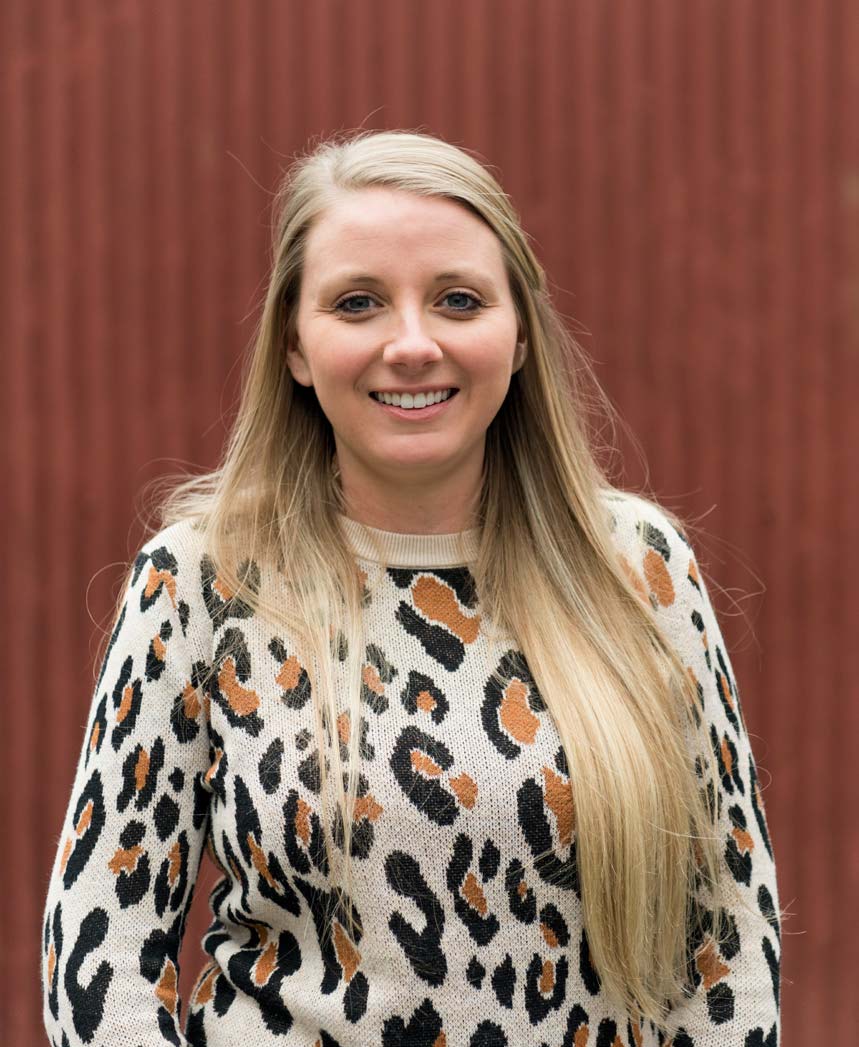
When a friend first asked Amanda Goodlin if she was following a Flexitarian diet, she had to pull her phone out to look up what it even was. After reading that it involved eating mostly plant-based, whole foods, but with the occasional addition of animal products, she realized she had already been eating that way for quite some time.
“I started fertility treatments back in 2010 and the first thing my doctor said to me was ‘If you are consuming animal products, you need to be getting high quality.’ It really was like a light bulb went on,” Amanda says.
She immediately started eating less meat and looking for better options when she did. The results were obvious right away. “My hormone levels changed drastically. My blood work and iron levels all came back so much better.” Aside from supporting her fertility, Amanda also noticed that when she cuts out meat and dairy completely, her skin is much clearer, too.
“To me,” Amanda says, “a Flexitarian is someone who is mindful about what they are eating. They are trying to be conscientious and follow a plant-based diet, but allow certain things in moderation if that is what their body is needing or craving.”
The benefits of the Flexitarian diet mirror those of similar plant-based eating models like veganism or vegetarianism – lowered risk of cancer and heart disease, weight loss, improved blood sugar and, of course, less impact to the environment. Amanda has modeled that definition pretty closely for the past ten years. “When meat is around, sometimes I eat it and sometimes I don’t,” she says.
Though Amanda chooses to limit her consumption of animal products, she doesn’t force her family to do it along with her. “My kids do it with me about 90% of the time, but my husband does eat meat most days,” she says. She lets them make the decision on how much they want, although she’s found that they often gravitate toward the veggies first.
Amanda remembers that finding a way to make the Flexitarian diet work within her budget was one of the hardest parts of making the switch, but starting Meatless Mondays made it easier. Cutting back on meat even one day a week is a great way to save money because meat is often the most expensive part of a meal. Cooking at home has also helped Amanda’s family save money.
She also gave some helpful tips for those who are interested in making the Flexitarian diet a part of their own lives: “It’s best to work from a meal plan,” Amanda says. “You can include your Meatless Monday or, if you love Taco Tuesday, you can do broccoli or cauliflower instead of meat and add your favorite seasonings.”
When it comes to dining out, Amanda recommends people try something new and different when they go out to eat. “See if they have a veggie burger or try a new salad. There are so many options and no matter where you go out to eat, there are always at least a few vegetarian options.”
Now that Amanda has been eating this way for 10 years, it’s like a way of life. She continues to feel great and loves having her family along for the ride.
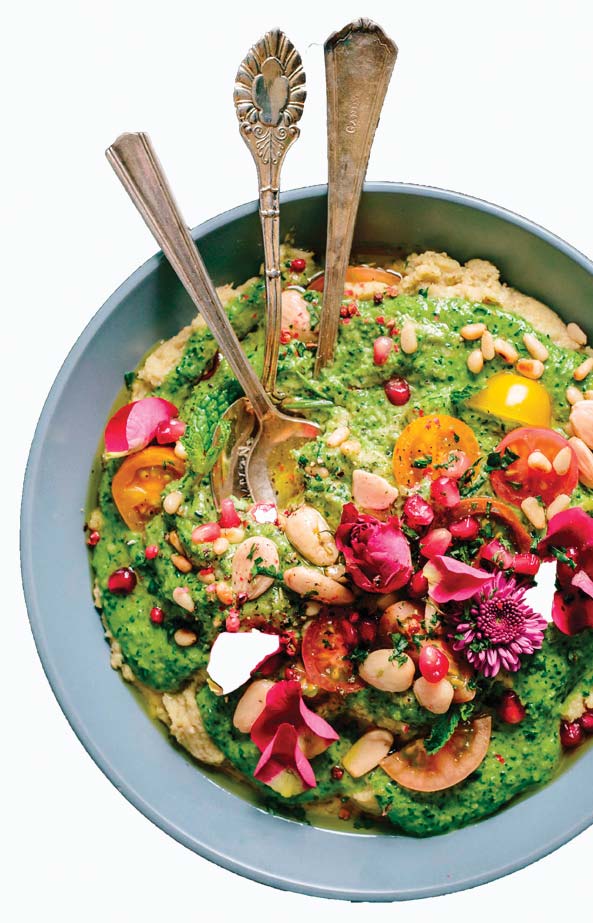 WHERE SHE SHOPS
WHERE SHE SHOPS
- Rainbow Blossom
- Kroger
FAVORITE SNACKS
- Roasted chickpeas
- Soy nuts
FAVORITE RESTAURANTS
- Drake’s
- Chuy’s




